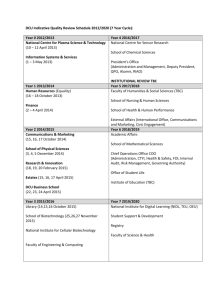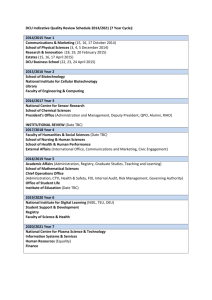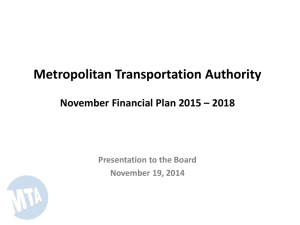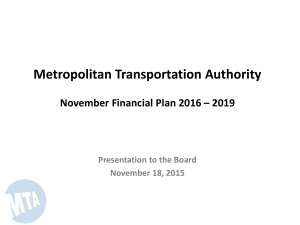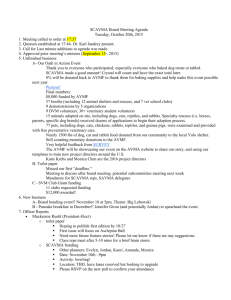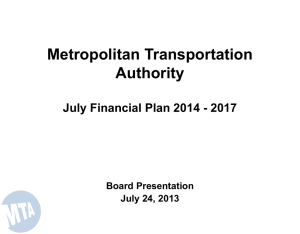Metropolitan Transportation Authority
advertisement
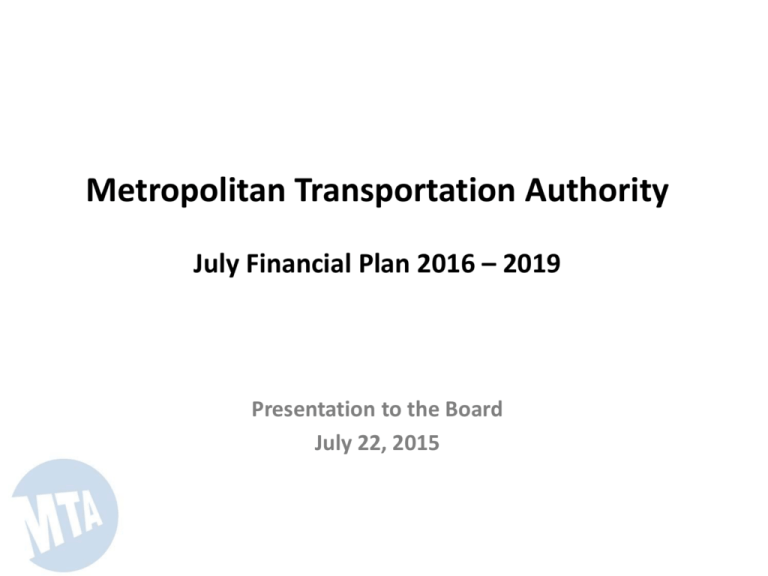
Metropolitan Transportation Authority July Financial Plan 2016 – 2019 Presentation to the Board July 22, 2015 The February Plan projected favorable cash balances through 2017 with a deficit of $305 million in 2018 ($ in millions) $150 102 $100 $50 47 10 $0 ($50) ($100) ($150) ($200) Note: Cash balances are carried forward to reduce next year’s deficit ($250) ($300) (305) ($350) 2015 2016 2017 2018 1 The February Plan was based on three key, inter-related elements • Biennial fare and toll revenue increases of 4% in 2015 and 2017 (2% annual increases) — Annualized increases of $260 million and $300 million, respectively • Increasing annual savings targets ($1.3 billion in 2015 increasing to $1.6 billion by 2018) • PAYGO contributions of $290 million annually starting in 2015 for the 2015 – 2019 Capital Program The February Plan also funded: ― Total safety investments of $430 million over the plan period ― Service and service quality investments totaling $173 million over the plan period ― New operational and maintenance investments of $146 million over the plan period ― Information Technology investments of $143 million, including the implementation of the Enterprise Asset Management program 2 What has changed since the February Plan? • • • Changes and other re-estimates improving financial results: — Higher real estate transaction tax receipts — Lower pension forecasts — Lower energy expense forecasts — Increased fare and toll revenue forecasts — Higher PBT revenue estimates — Better than forecasted 2014 results Changes and other re-estimates worsening financial results: ― Additional maintenance and operational investments, including Enterprise Asset Management ― Increased investments in IT ― Higher debt service costs from accelerated debt issuance offset by actual and forecasted interest rate savings in the out-years — Loss of local reimbursement for LI Bus termination — Higher health & welfare/OPEB current payment costs offset by savings in 2015 — Increased safety and security investments In total, re-estimates and other changes are $1 billion favorable through 2018 3 Highlights of the July Plan • Projected fare and toll increases held to 4% in 2017 and 2019 (2% annual increase) • Increases annually recurring savings targets (nearly $1.8 billion by 2019) • Additional PAYGO contributions of $125 million annually starting in 2015 ─ Together with a $75 million “one-shot” contribution in 2015, total contributions over the Plan Period are $700 million ─ $1.1 billion of additional PAYGO over expected eight – year expenditure period ─ $2.4 billion of additional funding capacity if PAYGO funds are used for debt service ─ Funding gap reduced from $14.8 billion to $12.4 billion • Additional service, service quality and service support of $183 million over the plan period • Financial Plan remains balanced through 2017, the 2018 deficit is reduced to $175 million and the 2019 deficit is $224 million 4 July Plan reflects $183 million in additional service, service quality and service support over the plan period • Delay Mitigation Program: ($79 million cost over the plan period) NYCT plans to increase the number of platform passenger controllers, reduce station dwell times, enhance Road Car Inspector coverage, track maintenance and defect repairs to mitigate delays on the right-ofway. • Select Bus Service (Bus Rapid Transit): ($62 million cost over the plan period) NYCT and MTA Bus intend to expand SBS/BRT and improve bus performance, including off-board fare collection, bus lanes, real-time information, low-floor hybrid-electric buses and service reliability; and increase “platform” service adjustments required to improve reliability and frequency of service in response to ridership trends and maintenance requirements. • Platform Budget Service Adjustments: ($28 million cost over the plan period) NYCT and MTA Bus will adjust service to increase reliability and frequency of service in response to ridership trends and maintenance requirements. • Improve On-Time-Performance: ($2 million cost over the plan period) SIR plans to add two additional crews, improve ferry boat connections, and increase rush hour express service. • Other: ($12 million cost over the plan period) Increased support for Operations Planning at NYCT and MNR, improve station appearance and homeless outreach at the LIRR and establish a formal division at NYCT that will respond more rapidly to the changing needs of the NYCT Subway system 5 We continue to increase our annually recurring savings targets ($ in millions) $1,800 $1,600 $1,400 2015 July Plan $1,200 2014 November Plan 2013 November Plan $1,000 2012 November Plan Prior Plans $800 $600 $400 $200 2010 2011 2012 2013 2014 2015 2016 2017 2018 2019 6 Since last November, savings initiatives have been identified and are being implemented ($ in millions) $350 $300 $250 83 79 $200 76 $150 125 48 128 $100 95 $50 45 $0 94 50 25 10 75 2015 2016 2017 2018 2019 $1,342 $1,516 $1,638 $1,723 $1,750 Identified Savings Initiatives Prior Targets – Unidentified Savings Increased Targets – Unidentified Savings Annual Savings Targets 7 Even with additional capital and operating budget investments, out year deficits are reduced ($ in millions) $200 165 102 102 $100 10 $0 N/A ($100) ($200) (175) February Plan (224) July Plan ($300) Note: Cash balances are carried forward to reduce next year’s deficit (305) ($400) 2016 2017 2018 2019 8 Challenges going forward • Secure funding and approval of 2015 – 2019 Capital Program • Avoid further legislative erosion of PMT and other revenues • Continue to pursue efficiencies/consolidations to maximize annually recurring cost savings; remain focused on existing cost control to avoid “backsliding” • Address chronic / looming cost issues: Workers’ compensation ― Claims ― Overtime ― “Cadillac tax” on future health benefits ― • Maintain discipline to use non-recurring revenues, favorable budget variances, excess resources to fund PAYGO and/or reduce unfunded liabilities, such as OPEBs and pension liabilities 9
